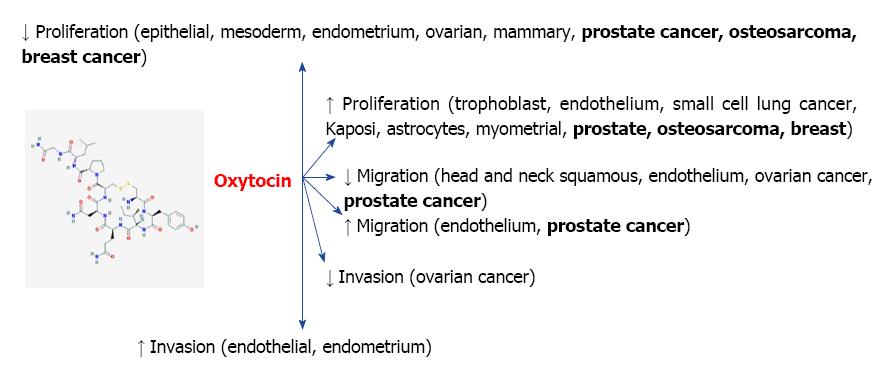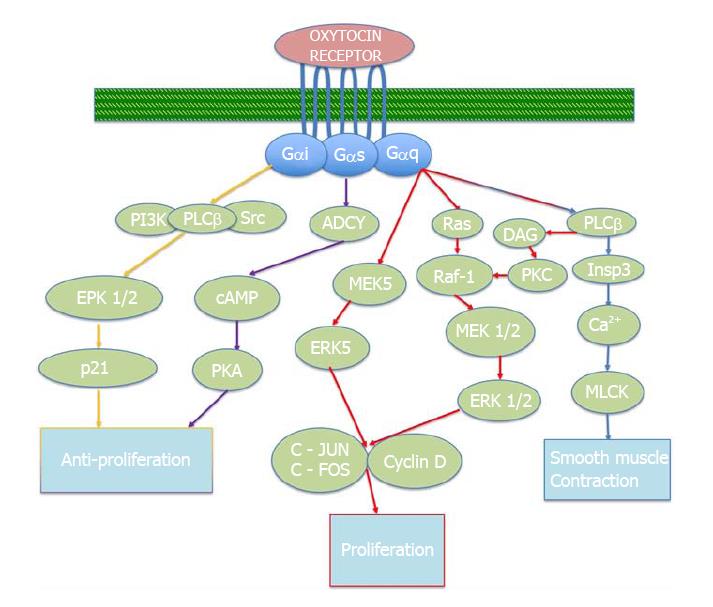Copyright
©The Author(s) 2018.
World J Clin Oncol. Sep 14, 2018; 9(5): 74-82
Published online Sep 14, 2018. doi: 10.5306/wjco.v9.i5.74
Published online Sep 14, 2018. doi: 10.5306/wjco.v9.i5.74
Figure 1 The potential role of oxytocin in various cancers and cell types.
Bold font indicates conflicting observations.
Figure 2 Mechanisms of action of oxytocin.
Yellow and purple are anti-proliferation (via different subunits), red is proliferation, and blue is smooth muscle contraction. Gαi: Guanine nucleotide binding protein subunit alpha I; Gαs: Guanine nucleotide binding protein subunit alpha s; Gαq: Guanine nucleotide binding protein subunit alpha q; PI3K: Phosphoinositide 3-kinase; PLCβ: Phospholipase beta; Src: Tyrosine protein kinase; ERK: Extracellular signal-regulated kinase; p21: Cyclin-dependent kinase inhibitor 1; ADCY: Adenylate cyclase; cAMP: Cyclic AMP; PKA: Protein kinase A; DAG: Diacylglycerol; PKC: Protein kinase C; Insp3: Inositol triphosphate 3; MLCK: Myosin light chain kinase.
- Citation: Lerman B, Harricharran T, Ogunwobi OO. Oxytocin and cancer: An emerging link. World J Clin Oncol 2018; 9(5): 74-82
- URL: https://www.wjgnet.com/2218-4333/full/v9/i5/74.htm
- DOI: https://dx.doi.org/10.5306/wjco.v9.i5.74










